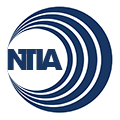EL-CID Online
Equipment Location Certification Information Database
The Certification Process
OMB Circular A-11 specifies in Section 31.12: “You must obtain a certification by the National Telecommunications and Information Administration (NTIA) of the Department of Commerce, or agency(ies) as designated by NTIA, that the radio frequencies required can be made available before you submit estimates to OMB for the development or procurement of major radio spectrum-dependent communications-electronics systems.”
To assist federal agencies in meeting the above responsibilities and to support the NTIA and the Interdepartment Radio Advisory Committee (IRAC) in the management of radio spectrum resources for the satisfaction of federal requirements, and in the national interest, these procedures provide for the review of certain new federal telecommunication systems and subsystems by the Spectrum Planning Subcommittee (SPS), at a number of the stages of their evolution, prior to the assignment of frequencies. Such review will, as appropriate, require an examination of the existing systems in the frequency band(s) being considered.
International Telecommunications Union
Space Network List (SNL) Online
SNL Online provides basic information concerning planned or existing space stations, earth stations and radio astronomy stations; also it gives information on the use of the frequency spectrum, on the occupancy of the orbits, on the reference publications and on pending networks. More information about the SNL Online can be found on the ITU Space Network List page.
Space Applications Manager (SAM)
The Space Applications Manager (SAM) is the new main menu driven software for the launch of ITU-BR Space Software Applications. This provides the users with a unique tool, to run the installed BR Space Applications from the main menu with ease rather than searching and starting an application individually. More information about the SAM can be found on the ITU Space Application Manager page.
Exemption from Spectrum Certification
Electronic Warfare/Electronic Counter-Measures (EW/ECM) Threat Simulators
EW/ECM threat simulators are specialized RF systems which operate in many parts of the frequency spectrum. These systems are used for testing, training, and evaluation of electronic warfare systems and procedures. They usually operate at military installations and ranges as specified in Sections 7.11 and 7.17 of the NTIA Manual. Threat simulators operate in accordance with Section 7.14 of the NTIA Manual, but their frequency assignments are exempt from the provisions of Chapter 10 of the NTIA Manual. This does not preclude the review of EW/ECM threat simulators by the IRAC. All threat simulator assignments will use the 'XT' station class and bear the special note S371 in the Annex A of the NTIA Manual.
Non License Devices
Federal policy for non-licensed devices is covered in Section 7.8 of the NTIA Manual, and such devices will normally not be considered for the purpose of this review procedure. Plans or proposals to operate non-licensed devices in space, however, must be submitted to the SPS for the record (this information should be submitted via a short memorandum and include the frequency bands, Part 15 FCC ID number if applicable, and how the equipment will be used). Agencies can request that information on a non-licensed device, regardless of whether it is to be used in a terrestrial application or in space, must included a justification for SPS consideration of such a device.

